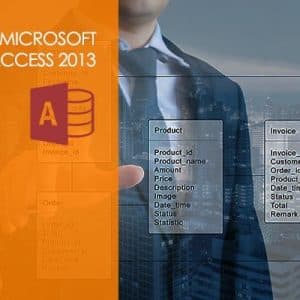4 Training Hours
43 Videos
4 Topic
75 Practice Questions
About Microsoft MD-101: Managing Modern Desktops
The MD-101 course from Microsoft is designed to ensure your success when taking the corresponding exam and attaining your certification. With this comprehensive online IT program, you will be prepared to deploy and update Windows as well as use Dynamic Deployment and Windows AutoPilot within an enterprise environment.
The Microsoft MD-101 course is designed to prepare students to take the Microsoft exam id MD-101. This training course covers an update strategy for deploying and updating Windows operating systems using Dynamic Deployment and Windows AutoPilot. This course also teaches students the necessary information to manage policies and profiles related to the modern desktop environment.
For Who Is This Exam
This exam is ideal for IT experts with specialized deployment strategy knowledge in installing, configuring and sustaining Windows clients and app deployment within a domain environment. Protecting the data security and reliability of the Windows device are key responsibilities associated with this field along with dynamic deployment methods. If you are aiming to take this exam, then be aware of the fact that it is designed for those who manage Windows clients in an enterprise deployment Active Directory environment. You may also have to work together with Microsoft 365 enterprise administrator, security administrator and other IT professionals when implementing deployment plan and modern desktop strategy conforming to business needs.
To be eligible for this exam, applicants should possess an in-depth understanding of device management, methods of deployment, client computer networking, policy-based management and cloud-based solutions.
Topics Related to MD-101 Training
- Device compliance policies and device data protection
- modern deployment methods, deployment readiness, and desktop deployment
- Endpoint Configuration and windows update policies
More About Microsoft MD-101: Managing Modern Desktops:
The Microsoft MD-101: Managing Modern Desktops course is designed to provide students with the necessary skills and knowledge to effectively manage and deploy modern desktops and devices in an enterprise environment. This course focuses on key aspects of desktop management, including operating system deployment, device configuration, application management, and security implementation. By gaining expertise in managing modern desktops, students will be prepared to meet the evolving demands of today’s digital workplace.
Knowledge Benefits:
Enrolling in the Microsoft MD-101: Managing Modern Desktops course will provide you with valuable knowledge about the management and deployment of modern desktops and devices. You will learn about Windows 10 deployment methods, including provisioning, upgrading, and managing Windows 10 images. Additionally, you will gain insights into device configuration and management, application deployment, and troubleshooting techniques. Understanding these concepts will enable you to efficiently manage and support modern desktop environments.
Career Benefits:
Proficiency in managing modern desktops is essential for IT professionals involved in desktop support, system administration, or IT operations. By completing the Microsoft MD-101: Managing Modern Desktops course, you will enhance your career prospects in roles such as desktop support specialist, system administrator, or IT consultant. Organizations across various industries are transitioning to modern desktop management approaches, making skills in this area highly valuable. This course will equip you with the necessary knowledge to excel in these roles.
Job Opportunities:
Upon completing the Microsoft MD-101: Managing Modern Desktops course, you will have access to a wide range of job opportunities in the field of modern desktop management. Some of the roles you can pursue include:
1. Desktop Support Specialist: Provide technical support for end-users, troubleshoot desktop issues, and manage software installations and updates.
2. System Administrator: Manage and maintain desktop infrastructure, including operating system deployment, configuration management, and security implementation.
3. IT Consultant: Advise organizations on modern desktop management strategies, conduct assessments, and assist in the implementation of desktop management solutions.
4. Deployment Engineer: Plan and execute large-scale deployments of Windows 10 and related applications, ensuring a smooth transition for end-users.
5. IT Project Manager: Lead projects related to modern desktop management initiatives, including operating system upgrades, application rollouts, and security enhancements.
Salary Potential:
Professionals skilled in managing modern desktops and devices are in high demand, and the salary potential in this field is promising. The precise salary range varies depending on factors such as location, experience, and job role. Entry-level positions in modern desktop management can command salaries ranging from $60,000 to $80,000 per year. With additional experience and specialized certifications, such as Microsoft 365 Certified: Modern Desktop Administrator Associate or Microsoft Certified: Enterprise Administrator Expert, professionals can earn well over $100,000 annually.
Conclusion:
In conclusion, the Microsoft MD-101: Managing Modern Desktops course provides a comprehensive understanding of modern desktop management principles and practices. By acquiring knowledge in this field, you will be well-prepared to pursue a rewarding career in managing and supporting modern desktop environments. Whether you aspire to work for a large enterprise, a managed service provider, or an IT consulting firm, this course will equip you with the necessary skills to effectively deploy, configure, and secure modern desktops. Enroll in this course today and take a significant step towards becoming a skilled modern desktop management professional.
Using IT Certs Training for Microsoft MD-101: Managing Modern Desktops Certification
IT Certs Training is an online training company that provides comprehensive training programs for various IT certifications, including Microsoft MD-101: Managing Modern Desktops. The program offers several benefits, making it the best option for obtaining this certification:
1. Flexibility:
IT Certs Training provides self-paced online courses that allow learners to study at their own pace and schedule. This flexibility is particularly useful for working professionals who want to obtain a certification while continuing to work.
2. Comprehensive Curriculum:
The IT Certs Training curriculum covers all the topics and skills required to pass the Microsoft MD-101: Managing Modern Desktops certification exam. The program provides videos, practice tests, and study materials that are designed to help learners master the exam objectives.
3. Experienced Instructors:
The program instructors are experienced professionals who have extensive knowledge and expertise in IT Networking and CyberSecurity in addition to many other areas of expertise. They provide guidance and support to learners throughout the training program.
4. Exam Preparation:
IT Certs Training provides exam preparation materials, including practice exams and study guides. These resources help learners prepare for the certification exam and increase their chances of passing it on the first try.
5. Cost-Effective:
The IT Certs Training program is cost-effective compared to other training programs. The program offers affordable pricing and provides value for money by offering comprehensive training and exam preparation resources.
Course Outline
Module 1: Deploy and Update Operating Systems
1.1 Instructor and Course Introduction
1.2 Exam Information
1.3 Deploy and Update Operating Systems Introduction
1.4 Plan and Implement Windows 10 by Using Dynamic Deployment
1.5 Plan and Implement Windows 10 by Using Windows Autopilot
1.6 Upgrade Devices to Windows 10
1.7 Manage Updates
1.8 Manage Device Authentication
1.9 Install VMware Workstation 15 in Windows 10 Demo
1.10 Performing a Clean Install of Windows 10 Demo
1.11 Upgrading Windows 8.1 to Windows 10 Demo
1.12 Configuring Locales Demo
1.13 Troubleshooting Failed Installation with Setup Logs Demo
1.14 Installing Windows 16 Server Demo
1.15 Installing Microsoft Deployment Toolkits (MDT) Part 1 Demo
1.16 Installing Microsoft Deployment Toolkits (MDT) Part 2 Demo
1.17 Setting Up an On-Site Domain Controller Demo
1.18 Joining Windows 10 Client Machine to an On-Site Domain Controller Demo
1.19 Getting Started with Free Azure Subscription Demo
1.20 Getting Familiarized with Azure Portal Options Demo
1.21 Create a Virtual Machine Demo
Module 2: Manage Policies and Profiles
2.1 Managing Policies and Profiles Introduction
2.2 Plan and Implement Co-Management
2.3 Implement Conditional Access and Compliance Policies
2.4 Configure Device Profiles
2.5 Manage User Profiles
2.6 Deploy Azure Container Instances Demo
2.7 Manage Access with RBAC Demo
2.8 Secure Network Traffic Demo
2.9 Installing OneDrive Demo
Module 3: Manage and Protect Devices
3.1 Manage and Protect Devices Introduction
3.2 Manage Windows Defender
3.3 Manage Intune Device Enrollment and Inventory
3.4 Monitor Devices
3.5 Windows Defender Security Center Overview Demo
3.6 Installing Windows Defender Application Guard Demo
3.7 Creating a New Inbound Rule Demo
Module 4: Manage Apps and Data
4.1 Manage Apps and Data Introduction
4.2 Deploy and Update Applications
4.3 Implement Mobile Application Management
4.4 Setting up a Microsoft Intune Account Demo
4.5 Create a New Group Demo
4.6 Confirm the Version of Windows Demo
Your Training Instructor

Jim Hollis
Independent Trainer | Consultant | Author
James is a confident, qualified independent trainer, consultant, and author with 26+ years of extensive managerial and leadership experience in the following areas: Risk Management, IT Security, Certified Information Security Manager (CISM), Certified Information Systems Security Manager (CISSM), CompTIA Cloud Admin Professional – CCAP, CompTIA IT Operations Specialist – CIOS, CompTIA Secure Cloud Professional – CSCP, CompTIA Secure Infrastructure Specialist – CSIS, Information Systems Management & Cyber Security, Cyber Security Law and Policy, Cybersecurity Regulatory Compliance, and Computer Networking. He sees teaching as a reciprocal relationship between instructors and students and believes that it is his responsibility as a trainer to provide students with an environment conducive to learning, knowledge that will be impactful in achieving life goals, materials that will assist in learning, and assistance with developing and maintaining motivation to be successful academically and in life.







Reviews
There are no reviews yet.